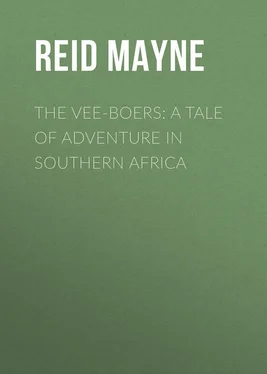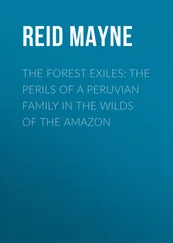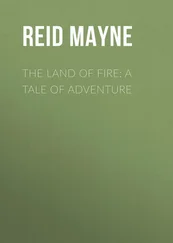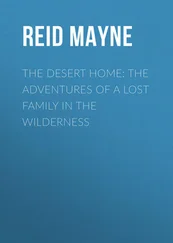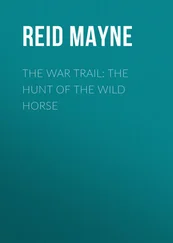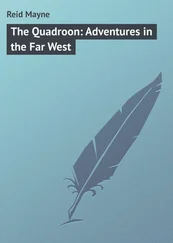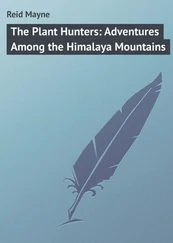Mayne Reid - The Vee-Boers - A Tale of Adventure in Southern Africa
Здесь есть возможность читать онлайн «Mayne Reid - The Vee-Boers - A Tale of Adventure in Southern Africa» — ознакомительный отрывок электронной книги совершенно бесплатно, а после прочтения отрывка купить полную версию. В некоторых случаях можно слушать аудио, скачать через торрент в формате fb2 и присутствует краткое содержание. Жанр: foreign_prose, foreign_children, на английском языке. Описание произведения, (предисловие) а так же отзывы посетителей доступны на портале библиотеки ЛибКат.
- Название:The Vee-Boers: A Tale of Adventure in Southern Africa
- Автор:
- Жанр:
- Год:неизвестен
- ISBN:нет данных
- Рейтинг книги:4 / 5. Голосов: 1
-
Избранное:Добавить в избранное
- Отзывы:
-
Ваша оценка:
- 80
- 1
- 2
- 3
- 4
- 5
The Vee-Boers: A Tale of Adventure in Southern Africa: краткое содержание, описание и аннотация
Предлагаем к чтению аннотацию, описание, краткое содержание или предисловие (зависит от того, что написал сам автор книги «The Vee-Boers: A Tale of Adventure in Southern Africa»). Если вы не нашли необходимую информацию о книге — напишите в комментариях, мы постараемся отыскать её.
The Vee-Boers: A Tale of Adventure in Southern Africa — читать онлайн ознакомительный отрывок
Ниже представлен текст книги, разбитый по страницам. Система сохранения места последней прочитанной страницы, позволяет с удобством читать онлайн бесплатно книгу «The Vee-Boers: A Tale of Adventure in Southern Africa», без необходимости каждый раз заново искать на чём Вы остановились. Поставьте закладку, и сможете в любой момент перейти на страницу, на которой закончили чтение.
Интервал:
Закладка:
And now the moon, as had been anticipated, giving a bright light, the travellers made good way; before midnight arriving at the second vley, where fortunately there was still a soupçon of water. It was not visible above the surface of sand that formed the vley’s bed; but on examination, several cavities were discovered in which appeared the much wished-for element, that had been hollowed out by the hoofs of quaggas and zebras. Writers talk of instinct teaching these animals to dig their own drinking wells; but the teaching in reality comes from a process of reasoning-intelligence, as that of man himself. All naturalists know that, as indeed ought every one who owns dog or cat, and has observed either spring up to a door-handle, making attempt with manifest design to draw the door open.
Now, thirsting like sponges, the travellers out-spanned, and speedily. All hands that could be spared from looking after the cattle set about sinking a pit in the sand; into which, soon came water enough for all their needs.
It required caution, however, with much shouting, and wielding of jamboks, to keep the animals out of it. The scent of the water had reached their nostrils, an attraction irresistible, and horses neighed, yoke-oxen bellowed, cows groaned in chorus with their bawling calves, all madly eager to wet their muzzles, and quench their thirst that had so long tortured them.
But the Vee-Boers, accustomed to such display, knew the precautions to be taken; so kept the impatient creatures under restraint and aloof, at length giving them to drink, from the “rush-buckets” 15 15 The “milk-baskets” of the Caffres are frequently in use among the Vee-Boers, when on trek, their lightness making them more convenient than vessels of a heavier kind. They are made of the stems of a species of “cyperus,” a rush allied to the “Paper-reed,” sewed so closely together that when dry they will hold water. The Caffres use them as milk pails, and, when emptied, their dogs are allowed to lick them clean. The cleaning is still further carried out by an insect – a species of cockroach (Blatta), which eats what remains of the milk from the interstices between the rushes. So important are these roaches regarded for this purpose, that a Caffre on erecting a new hut, will take his milk-baskets into an old one, and, as soon as a sufficient number of the insects have entered them, will carry the vessels back to where their services are required.
, which were part of their impedimenta .
Their own thirst satisfied, then that of their stock, supper was eaten heartily, and they retired to rest and sleep. Not all, however; nearly a third of their number remaining awake, and on the alert, as guards of the camp. They had no fear of their animals wandering away, fatigued as these were. Even had it been otherwise, and ever so fresh, their straying would have been little apprehended. For on trek , horses and cattle – in short all domesticated quadrupeds – regard the great waggons as they would the houses of a homestead, and will return to them just the same. Instinct – or, from what has been said above, rather reason – admonishes them that beside these is their best place, safest from the attack of predatory beasts – above all, from the lion, the real bête-noir of South African cattle.
Those of our travelling party had been sufficiently frightened at their last halting-place, to keep them cowed, and tame, for at least twenty-four hours after; and just so were they, starting and trembling at every cry of wild creature that reached their ears – even at that of the cowardly hyaena.
And here they heard lions too, though none came near. At this vley, still affording enough water to attract fat quaggas, zebras, and gemsboks, the tawny monsters needed not whetting their teeth on tame cattle, lean and tough as those of the Vee-Boers had got to be.
So the night passed by without further disturbance or adventure; day broke again; breakfast was eaten; the oxen invoked; and the journey over the karoo continued.
Chapter Five.
Under the Mowana
Three waggons drawn up under the shade of a gigantic mowana 16 16 “Mowana” is the South African synonym for the “baobab” (Adansonia digitata).
– the waggons of the Vee-Boers after their long, toilsome, and perilous journey across the karoo . They are again out-spanned, but now in laager , which tells of an intention to remain there for some little time. The vehicles are set in such fashion as to enclose a rectangular space, open at one end; while around them, at some distance off, a circular fence of thorny bushes roughly form a chevaux-de-frise , to hinder lions, hyaenas, and other marauders from approaching too near. Seemingly, the ground has been judiciously chosen, with an eye to the three chief requisites of a camp – grass, wood, and water. It is contiguous to the bank of a clear, running stream, on each side fringed with a belt of timber, trees of many different kinds; while landward, far as eye can reach, extends an open veldt , 17 17 “Veldt” is a tract of grassy plain or prairie. It is in part synonymous with our word “field,” which we have changed from its ancient form, and partly from its signification.
, grass-covered, and affording plenteous pasturage for their cattle. These are all now on it; oxen and milch-kine; the horses, too, hoppled neck-and-knee, to keep them from straying. But just now there is little fear of that, the animals not yet having recovered from the Karoo journey, and all are browsing tranquilly.
The sheep are not there – not one of them. If looked for, they would be found – or rather their carcases – lying here and there along the line of yesterday’s trek; though, like as not, even the carcases would not be there, only the skins and bones; the flesh long since devoured by jackals, hyenas, and vultures.
In addition to wood, water, and grass, the camp-ground enjoys another convenience – in tropical Africa, nearly as essential as any of the three – shade. The mowana , 18 18 As all know, the mowana, or baobab, is one of the largest of trees; specimens being met with having a girth of nearly 100 feet. It is not proportionately tall, however – nothing like the sequoias of California. Its leaves dried and pulverised are used as an antidote to various diseases, as diarrhoea, fevers, etc. Its fruit is slightly acid, but well-flavoured, and is eaten by the natives of tropical Africa. The mowana is essentially a tree of the tropics.
, with its wide extending arms, and thickly set foliage, casts shadow over a circle of full fifty yards diameter, and underneath it there is room for everybody and everything.
The hour is ten o’clock in the morning; the travellers having arrived there in the afternoon of the preceding day. That they have not been idle since can be told by the work done. The laager-fence itself must have cost time and labour in its construction; while inside it are other evidences of industry. Much of the lading of the waggons is out, and on the ground, to be re-packed and re-arranged for further transport; while upon lines, stretched from tree to tree, hang all sorts of lingerie in the process of drying; proof that the washerwomen of the party had been up and stirring betimes.
And this work, with many other kinds, is still in progress; not only the women and girls, but the men and boys being actively engaged one way or another. Some of the older hands are repairing saddles, bridles, and harness-gear; others mend vel-schoenen 19 19 “Vel-Schoenen.” Literally “skin shoes.” They are made of untanned hide and sewed with thongs of the same. They are worn by many Boers, though it is their Hottentot servants who make and mend them. One of these yellow-skinned cobblers will make a pair of Vel-Schoenen in less than a couple of hours.
; and still others look to the waggon-wheels, whose spokes and fellies, contracted by the drought, have been for some time threatening to part company. A lapping of wet raw hide, when it dries, will bind, and hold them together, firm as any clasp or screw of iron; this every South African traveller knows, and none better than a Vee-Boer.
Интервал:
Закладка:
Похожие книги на «The Vee-Boers: A Tale of Adventure in Southern Africa»
Представляем Вашему вниманию похожие книги на «The Vee-Boers: A Tale of Adventure in Southern Africa» списком для выбора. Мы отобрали схожую по названию и смыслу литературу в надежде предоставить читателям больше вариантов отыскать новые, интересные, ещё непрочитанные произведения.
Обсуждение, отзывы о книге «The Vee-Boers: A Tale of Adventure in Southern Africa» и просто собственные мнения читателей. Оставьте ваши комментарии, напишите, что Вы думаете о произведении, его смысле или главных героях. Укажите что конкретно понравилось, а что нет, и почему Вы так считаете.
